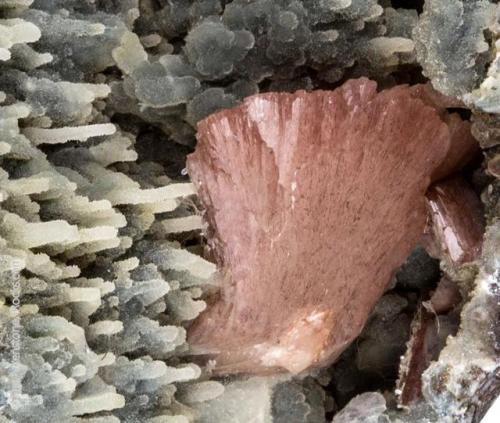HeulanditeWhile strictly the name of a family of minerals, a sub class of the zeolite series that pr
HeulanditeWhile strictly the name of a family of minerals, a sub class of the zeolite series that precipitates from hot fluids (often in cavities and bubbles in basaltic lava) at relatively low pressures and temperatures the whole lot is usually taken and labelled as one by the mineral trade (since only advanced testing will distinguish them for each other). Here the interchangeable element is the calcium to barium alkali column of the periodic table, with the first being the most common. Crystals often form in crusts with the wedge shaped edges showing though rhomb shapes are also possible.While usually colourless or white, orange, brown, yellow, brick-red, colours are also known alongside the orangey pink of the specimens in the photos. With a Mohs hardness of 3-4 it is too soft for jewellery use, and its two directions of perfect cleavage (see http://bit.ly/1BBVGgE and http://bit.ly/2B1wLZe for an explanation) makes it hard to facet. It was first distinguished as a separate mineral in 1818 and was named after a famous collector and dealer. Famous localities include the Deccan trapps of India (whence came this 14.4 x 10.6 x 7.3 cm specimen on a matrix of chalcedony stalactites with white calcite rhombs), Iceland, the Faroe Islands, Scotland and several places in the USA.LozImage credit: Rob Lavinsky/iRocks.comhttps://www.mindat.org/min-1889.htmlhttp://www.minerals.net/mineral/heulandite.aspxhttp://www.galleries.com/Heulandite -- source link
Tumblr Blog : the-earth-story.com
#heulandite#mineral#zeolite#mineralogy#crystal#geology


